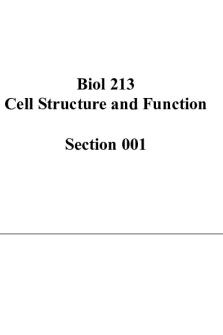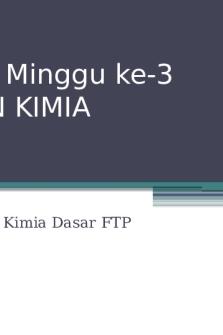POL364W - Professor Arbuckle exam 1 lectures and power point notes PDF

| Title | POL364W - Professor Arbuckle exam 1 lectures and power point notes |
|---|---|
| Author | Madeline Graul |
| Course | Federalism&Intrgvtmntl Relatns |
| Institution | Miami University |
| Pages | 16 |
| File Size | 133.3 KB |
| File Type | |
| Total Downloads | 9 |
| Total Views | 113 |
Summary
Professor Arbuckle exam 1 lectures and power point notes ...
Description
POL367W: Federalism and intergovernmental relations
Defining Federalism and intergovernmental Relations: What is federalism? o A system where a central government shares authority with sub-national governments o System of authority constitutionally apportioned between central and regional governments What is intergovernmental relations: o How do governments deal with each other? o What are their relevant roles, responsibilities and levels of influence? Levels of government National State Counties Municipalities Townships School districts Special districts Intergovernmental relations in action What are some of the policy areas we associate with intergovernmental relations? o Law enforcement o Schools o Infrastructure development Constitutional Basis of Federalism and IGR Framers vision of the relationship between national and state governments o Anti-federalists Protection of individual rights should be small scale, limited geographic jurisdiction Why? o Closer to the people o Similar types of people with similar types of needs Limitations? o Federalists position? National government can influence the states and can represent and provide public goods that are uniquely national Constitution divides authority between national and state government o Powers delegated to the national government: National defense Interstate commerce o Powers constitutionally delegated to the states Everything that the states don’t have power of Source of conflict between state and federal government in the constitution o 10th amendment v “necessary and proper clause”
Allows for federal gvnt to do whatever is necessary and proper to do what is explicitly delegated to them in the const Expands their reach o Supremacy clause The constitution is highest law of the land o Commerce clause o Taxing and spending clause o “General welfare clause" Dual Federalism o “layer cake federalism” Layers work independently, not much mixing o Is dual federalism a realistic goal? Much more easily practiced in the early days because.. technology brings people closer together Much easier to separate roles Federal government had few resources to extend scope Dual federalism reinforced by federal officials and judiciary Cooperation in IGR: Mechanism for cooperation in early days o Joint stock companies o Land grants o Technical assistance Increasing federal involvement Major causes of increased interdependence over the years o Civil war Union strengthened Fourteenth amendment Unified citizenship o Economic expansion/ industrial revolution o Increasing population/ distribution of population o Great depression o Progressive era o 16th amendment (1913) o Professionalizing state bureaucracies Basic Types of Assistance: Grants-in-aid o Voluntary arrangements o Different type of grants Categorical grants v. block grants Matching grants Formula grants v project grants o Revenue sharing o Technical assistance The New Deal Change intergovernmental relations?
o Response to GD Many more categorical grants o Welfare-afdc o School lunches o Public works/infrastructure o Emergency work relief New aid to local government Marble cake federalism more prevalent The Great Society: Lyndon johnson changed intergovernmental relations o Expanded federal involvement o “creative federalism”: involve the private sector Professionalization of government Impacts of expansion of grants system? o Professionalization of governments o Result of and stimulus for interest groups Intergovernmental challenges: Additional problems? o Increased interagency competition “venue shopping” o Grantsmanship Implications o Incentive to overrun local priorities o Limited flexibility o “vertical functional autocracies” Interdependence and complexity: Interdependence: o Power shared among branches and layers of government o Seperate but not completely interdependent o Conflict and cooperation Complexity Intergovernmental bargaining “typical style of decision making in American intergovernmental system is one of bargaining under conditions of partial conflict” o Causes of this emphasis on bargaining Constitutional foundations Need to cooperate Different constituencies and objectives Value conflict Initiatives to reshape the system Nixon’s new federalism o Revenue sharing o Block grants o Administrative initiatives to streamline and expedite grant process Reagan: New federalism revisited
o More block grants o Devolution of responsibilities o Administrative simplification Shifting more authority and responsibility to states impact policy implementation: o What changes would be necessary to make it work? Increase in state and local capacity Change in tax system Practicality
The Setting of Intergovernmental Relations: Fredrickson Ch. 1 Intergovernmental relations in Federalism: Amtrak is an example of federalism in actions o Policy problem? Private good, but controlled by government because of debate between passenger vs freight trains o Federal government involvement: They run it, bookkeeping o State government involvement: Specific laws on where to place train stations, where to put the tracks o Local governments: Specific laws on where to place train stations, where to put the tracks Contribute through infrastructure o Private sector: Private company owns most of the tracks and Amtrak has to lease from them o Collaborative effort Intergovernmental management o Implementation through deliberate negotiation (^ example) Managing networks of public, private and non-profit organizations Interactions of 90,000+ governments, private and non profit stakeholders Deliberate negotiated response 3 types of political systems o Unitary o Federalism o Confederal Why is “purely unitary” an “abstract concept”? Models of federalism Competitive models of federalism o One level has more power over the others Nation centered federalism Environmental policy Strengths o Uniformity o Broader perspective
o Resources Weaknesses? o Inefficiency of one size fits all policies o Red tape, bureaucratic inefficiency o Lack of accessibility o Concentration of power o Ex: No child left behind States-centered federalism Strengths: o Flexibility, responsiveness, adaptability o Innovation, “laboratories of democracy” o Competition Weaknesses: o Lack of capacity, resources o Competition Dual federalism Layer cake model where national and regional governments are both powerful but have clear areas of power Clear division of responsibility Balance Clear lines of accountability Weaknesses? o Decisions made in some policy areas might affect others o Hard to separate issues o Blurry boundaries Benefits of thinking about federalism in terms of competitive models? Incentivized to do better Weaknesses? Doesn’t describe every model, doesn’t allow for nuance o Some policy areas that have nation centered and state centered, so treating them as mutually exclusive ignores some of the diversity o Interdependent models Cooperative federalism Marble cake federalism Mixed together, more collaborative Mechanisms that enable cooperative federalism o Grant programs o Technical assistance o Working groups/committees Creative federalism Like cooperative, but bring in private sector to find solutions New federalism Subnational autonomy/empowerment Rowboat federalism?
o Functional models of federalism Picket fence federalism Relationship between levels of government and people within those governments o 2 or three horizontal bars: three levels of government o Pickets are vertical: interactions between functional specialists Functional bureaucracies across levels/sectors are source of power o National state local agencies, interest groups o “verticle functional autocracies” o Bond and loyalty among agencies/professionals stronger tan same level government o Sub-government, iron triangles form resistence to outside control Makes coordination across policy areas difficult Strengths? o Better substance out of policies- collaboration between professionals Weaknesses? o Policies might not get implemented because diversity among policy areas o Two simplicity Bamboo fence federalism Similar to picket fence but more flexible across different levels o Verticle and horizontal relationships important o Sub specialties include broad groups of specialists- ties among them are strong Issue policy networks o Horizontal ties more significant in picket fence model Benefits of functional models? Highlights importance of functional specialists in policymaking Highlights differences and competeing policy goals within governments Weaknesses? May overstate consensus among specialties Benefits and Costs of Federalism: Benefits of intergovernmental implementation (Federalism): o Flexibility o Preventing abuse of power o Encourages innovation o Competition/ responsiveness o Coping with conflict o Fostering participation and self-reliance o Military and diplomatic strength o Economic benefits
Costs of intergovernmental implementation o Neglect of externalities Social cost of pollution: those who are not part of the production of the pollution but feel the negative effects o Coordination problems o Unresponsiveness/ lack of accountability o Less capacity o Localistic bias/NIMBY o Bias toward affluence o Inequity o Evasion of responsibility
Frederickson Et Al Chapter 2 Defining Public Policy: Public policy is the aggregation of government actions that affect citizens o What government does or does not do o Level of government on which it is done o Arena in which it occurs Stages of policy cycle? o Agenda setting o Policy formulation o Implementation o Evaluation o Termination o Can be broken into three broad levels Decision Action/output Impact Power in intergovernmental relations Role of power in the federal system o Power is shared Distinct sources of social power? o Reward Give grant money o Coercion Threatening to take away grant money o Legitimate o Referent o Expert If you have expertise in the policy area then people will listen to you Scope of Conflict Number and type of stakeholders involved Number, type and level of government actors involved May expand or contract as stakeholders attempt to change balance of power and or nature of engagement
o Coalition building o Decision making arena o Issue definition Political Parties and Intergovernmental Relations Role of political parties in intergovernmental politics Effects of federalism on political parties o Encourages disunity/ fragmentation Numerous subnational governments Most elected official elected at subnational levels Creates internal divisions Political party officials selected from the bottom up o Enables opposition party survival o Political parties must balance national and subnational perspectives Interest groups and intergovernmental politics What are interest groups? o Lobby for their interests, business interest groups, Role in federalism o “multiple crack” conceptualization Multiplicity of decision making arenas Multiplicity of groups Diversity increases as scale increases Multiple decision making points in policy process Government competition Intergovernmental interest groups? Varieties of intergovernmental interest group o Organizations representing levels of government o Organizations representing roles/institutions within governments o Organizations representing specific jurisdictions o Organizations representing burueacratic jurisdictions Governments as interest groups How are state and local government associations “unique form of interest groups?” o Are associations of public officials o Represent same constituency as national elected officials o Are more concerned with administration of policies than substance o Lobby for governments not necessarily constituents o Scope is broader and narrower Limited to their geographical location Intergovernmental Interest Groups: Advantages o Legitimacy and respect o Political influence o Access o Social status Challenges within intergovernmental interest groups o Disunity
o Competition o Need for private interest group support Congress’ role in intergovernmental politics? Incentive to respond to subnational viewpoints o Localized recruitment o Localized constituencies o Constituency service work o Committee system o Relative weakness of party system Hierarchy of Law Primacy of law o US Constitution o Congressional laws o Administrative regulations o State Constitutions o State Legislative Laws o State Administrative regulations o Local Actions Four methods of regulatory federalism o Direct orders State to local o Cross-cutting sanctions One requirement is applied across the entire spectrum of policy areas Anti-discrimination: housing, employing, transportation o Cross-over sanctions Upper level government uses sanctions in one area to enforce another sanction in a different area Threat and coercion o Preemption When the federal government rules that the state approach is inadequate so they supersede their own rules Clean water act: states can implement their own regulatory standards as long as they meet federal standards Federalism in the Constitution Supreme courts role in American federalism What cant states do? o Declare war o Regulate international and interstate commerce o Enter into international treaties o Impose tariffs o Coin money o No states can be formed within existing states What can states do? o 11th amendment Intergovernmental Boundaries
Boundaries for national government authority o Commerce clause Criteria for assessing valid statuses Activites to be regulated must substantially effect interstate commerce US v Lopez Struck down gun-free zones act Gonzales v Raich Boundaries for national government authority o 14th amendment Section 5 authorizes congress to pass laws implementing and enforcing provisions within Implications for federalism? States had to respect: o Due process o Equal protection o Bill of rights o 11th amendment Boundaries on national o Spending clause Taxing and spending clause Taxation to provide common defense and general welfare of US Conditions that need to be met Must promote general welfare Must be done overtly and ambiguously Must be related to national priorities Must not violate other parts of constitution Boundaries on state? o Dominant commerce clause? o 5th amendment Regulatory takings Property rights o 14th amendment o Full faith and credit clause Driver’s license in one state has to be honored in another state o Privilege and immunities clause
Stephens and wikstrom chapter 1: Defining federalism: De jure and de facto intergovernmental arrangements (legal and extralegal) How do stephens and wilkstroms characterize the local government level o Local governmetns don’t really have a place in the hierarchy according to federalism Operate out of convenience o Contains distinct entities
o Layered o Interdependent and complex Mcmahon’s 5 essential attributes to federal system o Power is divided between levels o Each level must have a substantial independent authority o Each level must have authority in their own jurisdiction o Constituent governments need procedural and organizational freedom o Legal equality among states Verticle and horizontal balance Vertical o Federal to states o States to local Horixontal o Agency to agency o States to state o County to county o Cities to cities
Trends and issues new pp Interstate relations Rival ally duality? o Fragile equilibrium among states o Competition natural condition o Consequences of push and pull of competition and cooperation Basic rules for state interaction o Full faith and credit clause o Privilege and immunities o Interstate renditions clause o Mechanism for interstate compacts o Federal judiciary resolves conflics o Commerce clause/ dormant commerce clause o Legal equality of each state Influences on decisions to cooperate or compete? o Cooperation? Common interests Threat of federal intervention o Competition? Frederickson et al chapter 3- fiscal federalism Changing Patterns of Fiscal Federalism Changes in federalism since 1902
o Collectively: massive revenue and expenditure increase Form approximately 7.7% to 36% of GDP o State and national government’s revenue share increased Fed increase: from 38-50% State increase: 11-28% o Local own source decrease: 51-22% Lot more dependent on higher levels o State and local governments heavily dependent on higher levels of government Reasons? 16th amendement o Federal income tax o National gvnt got a lot more revenue National problems= national response/ spillover Limitations on state and local taxing ability o Federal government taxation (income tax) creates a problem Inter-jurisdictional competition Social mobility Incentives to cost-shift Availability of “earmarks” o Way grants vary? Discretion given to grant recipient/ strings attached Categorical grants Block grants Revenue sharing Method of determining distribution of funding 2 general methods o Formula grants Worded according to some sort of formula Medicaid according to a formula that represents demand from the state o Project grants Money allocated based on the merit of the project proposal Competitive Strengths Competitive, granting agency selects the best application The recipients have discretion- design the project but the giver of the grant decides how much money to award- flexibility Criticisms Promotes grantsmanship Favors wealthier jurisdictions Grant awards Open ended v close ended awards
Matching requirements The grant system o Reasons for grants Permit national government to assert national priorities Ensures minimum level of service delivery Equalization of needs and resources Correcting externalities Increase progressiveness of government finance Encourage structural reforms Stimulate innovation Increase flexibility/adaptability Incentivize maintenance of effort Minimize unintended distortions in recipient budgets Maintain role for lower level governments Minimize waste o Conflicting goals? Federal priorities v state flexibility Incentivize spending v reducing waste The federal government wants to spend money on federal programs and want to incentivize the states to spend money on federal programs, but they don’t want to give the states money that they could spend on themselves Federal gvnt wants to spend just enough money that they have to in order to make the states implements plants Incentivize spending v minimize unintended distortions Federal gvnt wants to encourage states to implement programs but they don’t want the states to spend more money then is necessary to accomplish the baseline level of service that they want to accomplish o Grants effects? Stimulate greater spending- recipients spend more than they otherwise would have Income effect Price effect Often replaces rather than supplements own source funding – fungibility Get the grant for the typical issue- the money that you would use for that issue will then be used for something else Federal government would want to avoid that- states should spend as much money as they can then have the federal government supplement that Increasing policy influence of levels of governments distributing grants Reporting requirements (red tape) Factors limiting policy influence Recipients can shop around Fungibility Bargaining
Enforcement challenges Political coalitions and grants o Group preferences for grant types? Public officials at granting level? Categorical grants Block grants Public officials at recipient level? Block grants Generalists? o Like the flexibility of block grants Program specialists? Interest groups at granting level? Categorical grants so that each Interest groups at recipient ...
Similar Free PDFs

MCED Power Point notes
- 13 Pages

Power point chapter 1
- 71 Pages

Power Point 1 Introduction
- 1 Pages

Power point tema 1
- 17 Pages

Nervous System Power Point Notes
- 8 Pages

Manual Power Point - Apuntes 1
- 69 Pages

Lectures Dot Point Summary
- 38 Pages

Power Point Outline
- 1 Pages

Power Point tanya - MEDICINA
- 6 Pages

power point Ascaris lumbricoides
- 19 Pages

Power point rematik wita
- 7 Pages

POWER POINT IKATAN KIMIA
- 27 Pages

MODUL MICROSOFT POWER POINT
- 14 Pages

Power point BULLYING
- 7 Pages
Popular Institutions
- Tinajero National High School - Annex
- Politeknik Caltex Riau
- Yokohama City University
- SGT University
- University of Al-Qadisiyah
- Divine Word College of Vigan
- Techniek College Rotterdam
- Universidade de Santiago
- Universiti Teknologi MARA Cawangan Johor Kampus Pasir Gudang
- Poltekkes Kemenkes Yogyakarta
- Baguio City National High School
- Colegio san marcos
- preparatoria uno
- Centro de Bachillerato Tecnológico Industrial y de Servicios No. 107
- Dalian Maritime University
- Quang Trung Secondary School
- Colegio Tecnológico en Informática
- Corporación Regional de Educación Superior
- Grupo CEDVA
- Dar Al Uloom University
- Centro de Estudios Preuniversitarios de la Universidad Nacional de Ingeniería
- 上智大学
- Aakash International School, Nuna Majara
- San Felipe Neri Catholic School
- Kang Chiao International School - New Taipei City
- Misamis Occidental National High School
- Institución Educativa Escuela Normal Juan Ladrilleros
- Kolehiyo ng Pantukan
- Batanes State College
- Instituto Continental
- Sekolah Menengah Kejuruan Kesehatan Kaltara (Tarakan)
- Colegio de La Inmaculada Concepcion - Cebu

